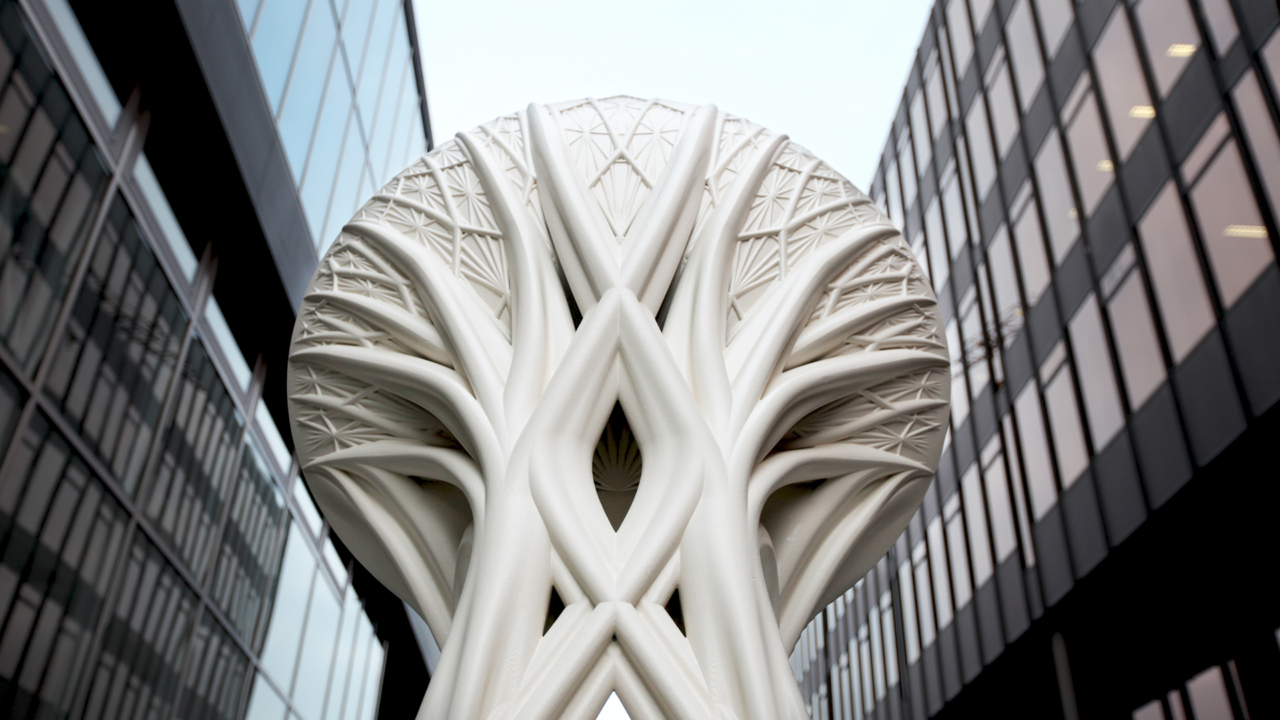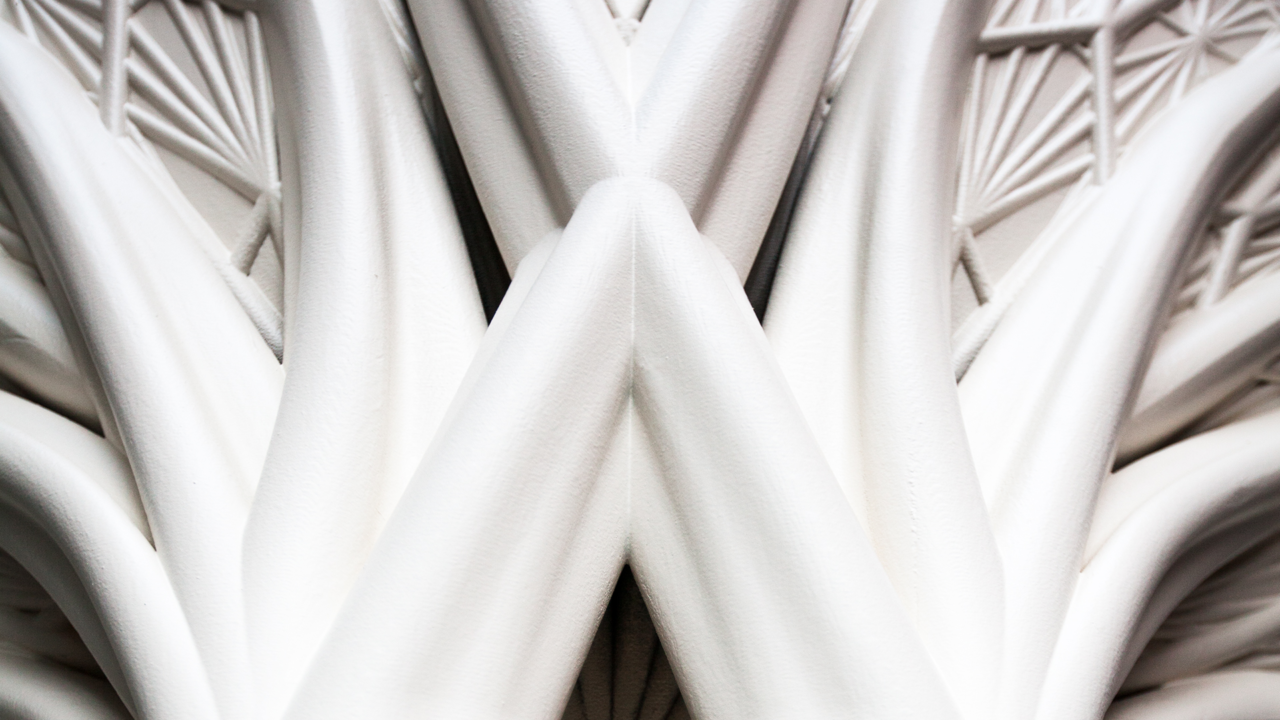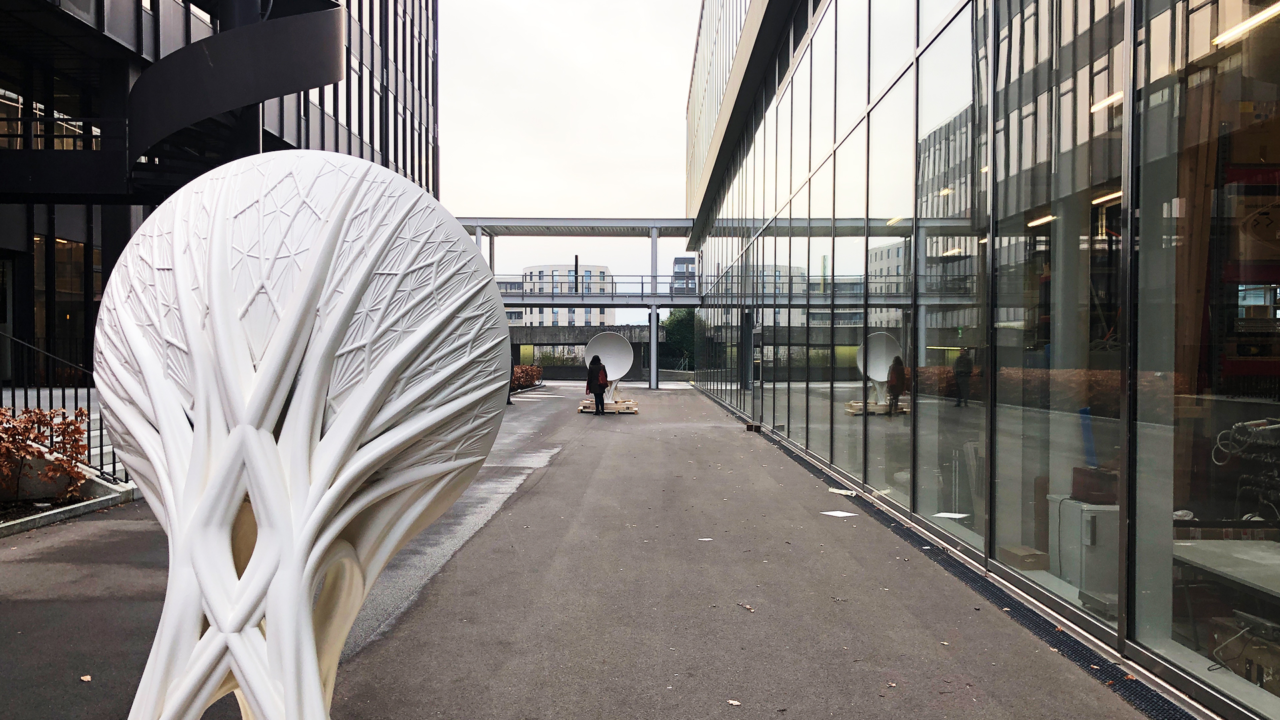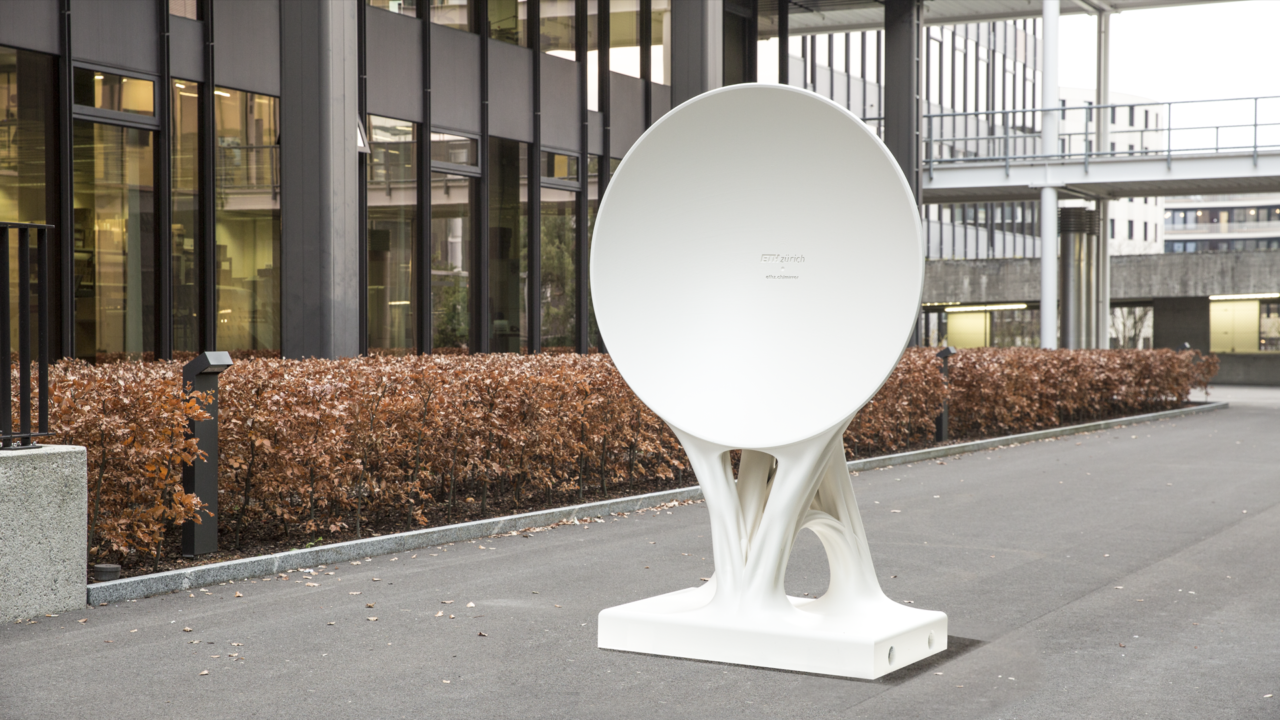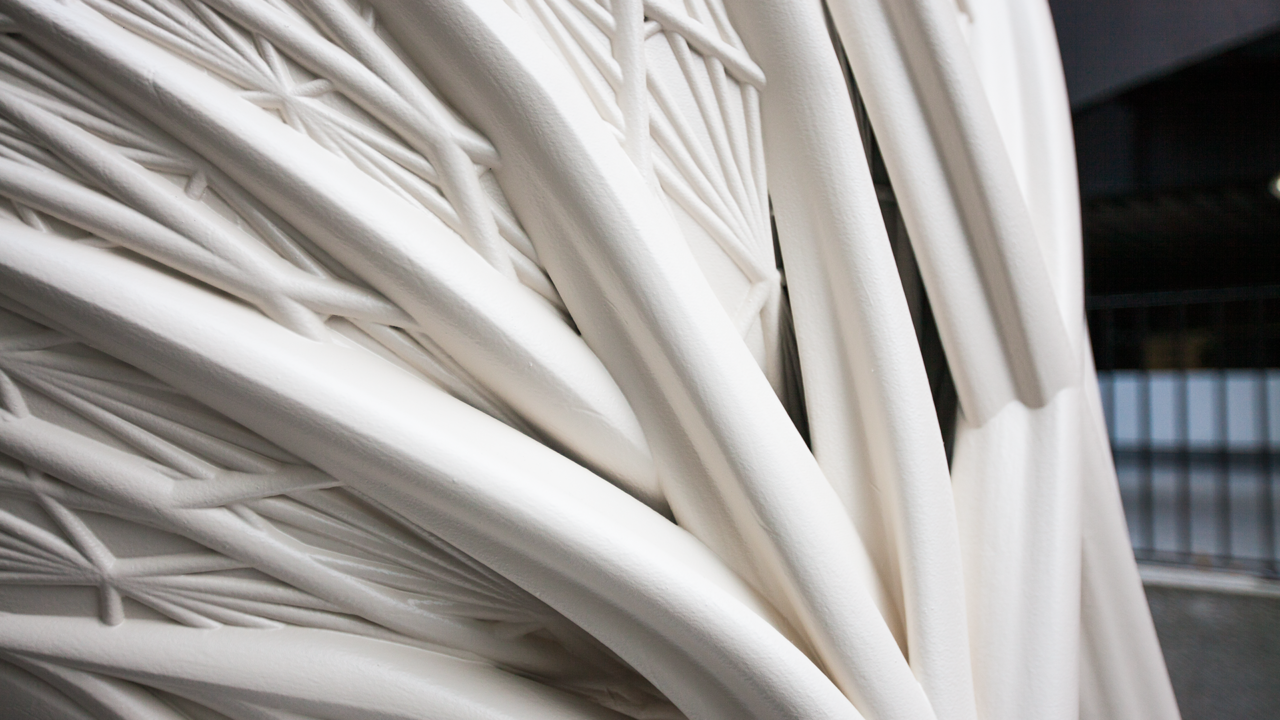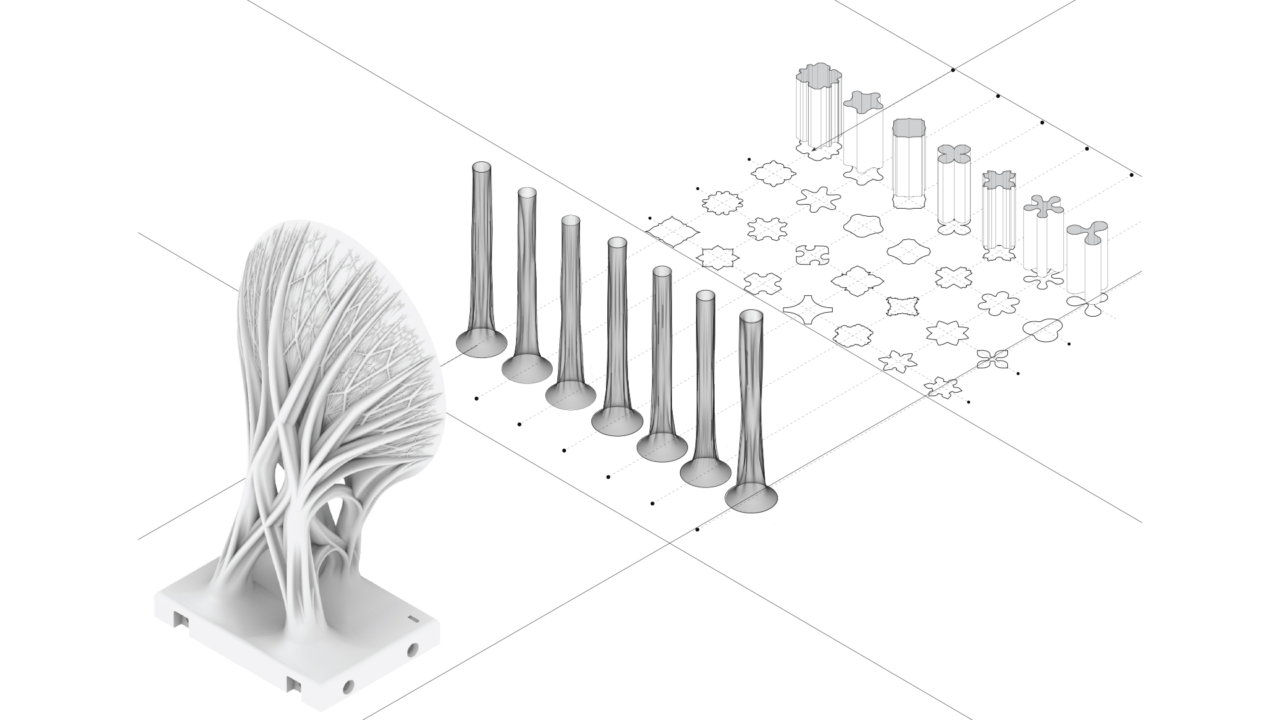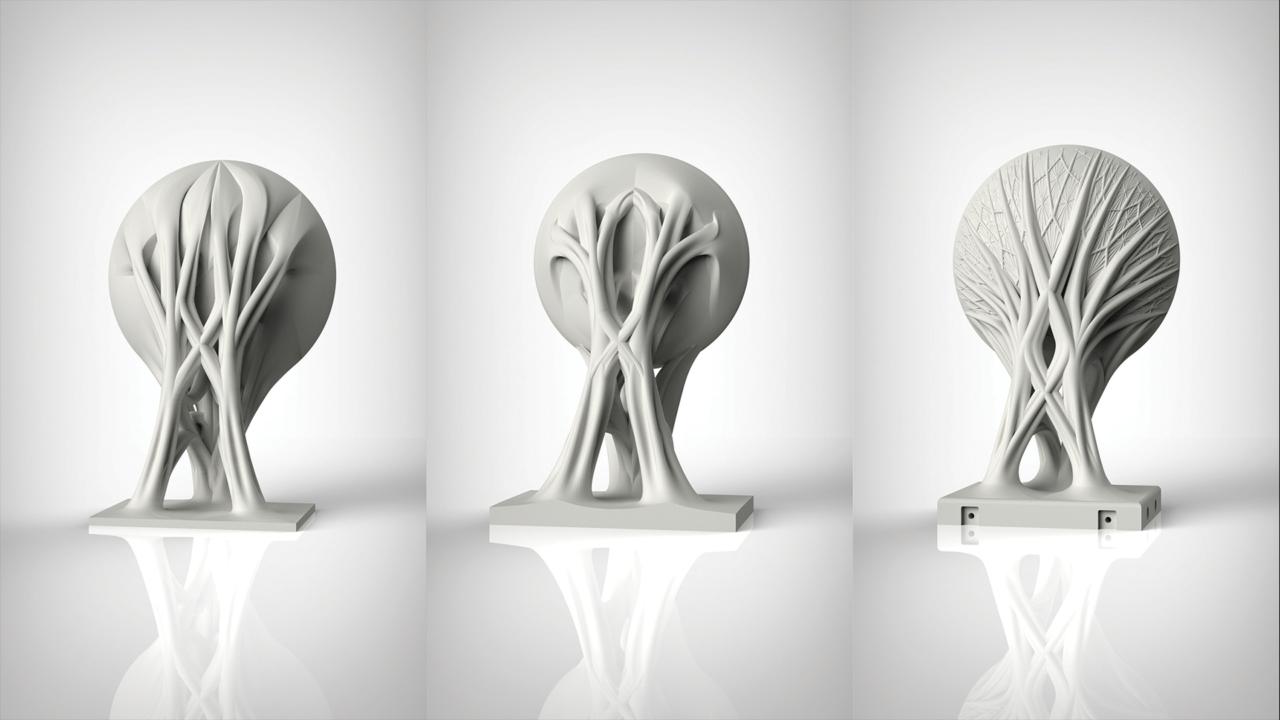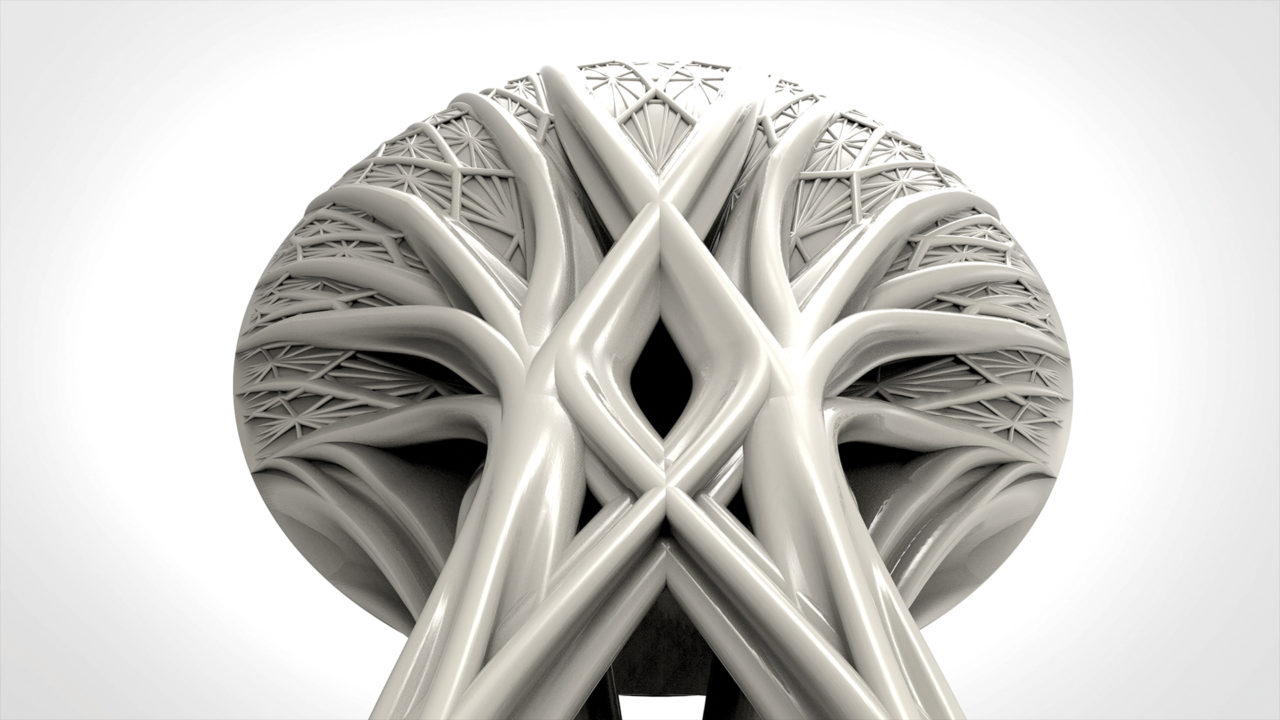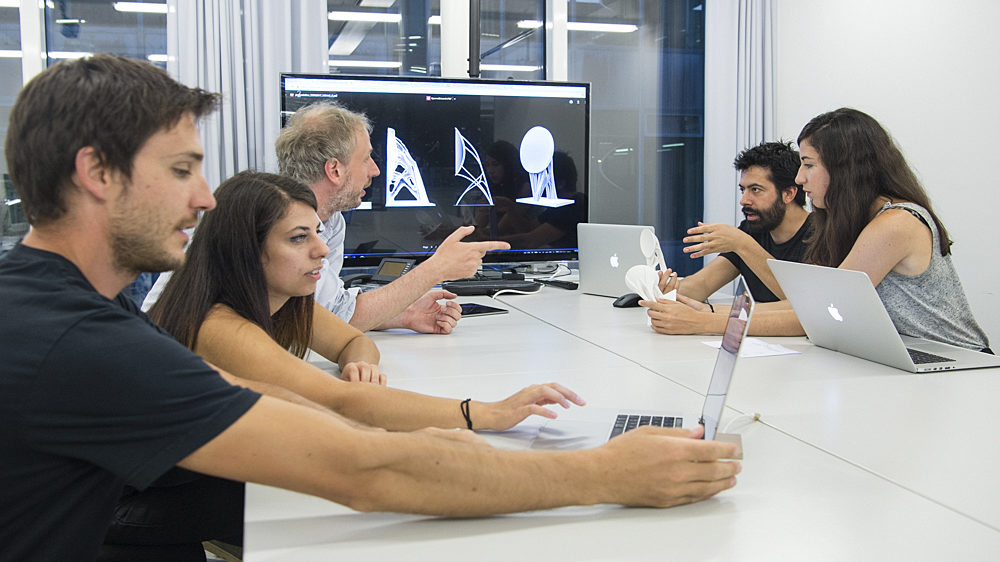With its performative form, engineered to create a spatial acoustic effect whilst being structurally optimized for efficient material use, the installation “Acoustic Mirrors” showcases the potential of computational design and large scale 3D printing for construction.
The interdisciplinary project bridging physics and architecture consists of two 2 meter monolithic concave mirrors. These mirrors are designed to allow people to communicate by whispering over a large distance, making use of a physical effect, which can also be found in the historic architecture of whispering galleries.
The organic and highly ornate design of the mirrors was generated through custom design software, integrating acoustic, structural and fabrication parameters. An optimal weight / strength ratio could be achieved by selectively distributing material along the flow of forces. Using binder-jet 3D printing, the resulting complex forms could be materialised in a fully automated and materially efficient fabrication process with precision at a fraction of a millimetre.

computational design
The design is entirely generated within custom software that integrates a structural optimization task and an acoustic simulation process. This workflow facilitates a deep study and evaluation of several form variations, while integrating multiple criteria into the design. In addition, the parametric design tool developed for this project allows the design of both the overall structures and the small scale details in a coherent process.
The overall form is dominated by a spherical cap, which reflects and focusses acoustic waves. The dimension and position of the mirror shell is calculated in a feedback loop coupled with the acoustic simulation software developed by Dr. Kurt. Heutschi at the Signal and Information Processing Laboratory of ETH (ISI). The custom software simulates the propagation of the reflected sound waves and evaluates the sound amplification on the receiving end.

Topology optimization
One of the design goals was to optimize the geometry of the sphere’s supporting structure in order to reduce the overall weight of the construction. Material properties of 3D printed sandstone had to be taken into account, – with similar properties to natural sandstone – the material is stronger in compression than in bending or tension and so topology optimisation was used for an optimal material distribution to critical areas where stiffness is required and topological form-finding to limit tension forces within the geometry.
For this project, a multi-level sub-structuring eigensolver finds the optimal material distribution and topological arrangement of the supporting pillars. The algorithm is used as the basic form-finding tool that is later refined according to the design intention. During the iterative process of optimisation, design inputs, geometrical constraints and structural evaluation are integrated to achieve the desired objective.

The new design space resulting from the optimisation algorithm is refined as a parametric definition builds the initial skeleton into organic ribs of different section profiles, which are blended in a specified sequence. The thickness of the spherical surface is revisited as well, after consultation with the printing partner, to meet the minimum binder-jetting requirements and prevent cracks and holes during printing. The large surface contributes a substantial amount of mass to the overall structure. In order to reduce this mass and stiffen the shell, an organic hierarchical microstructure was designed to branch from the main support elements and subdivide the overall backside with stiffening ribs. With this shape/topography optimisation, the thickness of the spherical cap could be reduced from 50 to only 23mm.
sandstone binder jetting for construction
For the first time, 3D binderjet printing was used to create a large scale outdoor installation made from artificial sandstone. The two mirrors are some of the largest parts ever printed with binder jetting for exterior use.
Among the various 3D printing strategies, binderjet printing offers specific advantages for construction:
- High resolution: Features can be printed in a resolution at a fraction of a millimeter
- Large dimension: Large print-bed of up to 4x2x1m
- Highest geometric freedom: Cantilevering and hollow geometries are possible as the loose sand acts as support during the printing process
- Fast print speed: Fabrication time is independent from the complexity of the geometry due to fullwidth industrial printheads.
- Low cost: Material costs are significantly lower compared to other high resolution printing strategies-
Each acoustic mirror could be printed with the largest industrial 3D binderjet printer with a print-bed of 4x2x1m and a layer height of 0.3 mm in less than 48 hours.

In order to strengthen the printed parts and address the brittle nature of sandstone, tests of different sealing resins were made on printed test bars to achieve both structural strengthening of the printed silica sand and sealing of the material pores in order to make them water resistant. The selected sprayed sealant, a thin layer of polyester resin, protects the structure against the weather. Structural tests have also shown that the 3D printed parts can be dramatically strengthened through the resulting composite material system. A final coating of a bright layer of color reveals all the details and ornaments of the installation and guarantees high contrast and shadowplay under sunlight.



